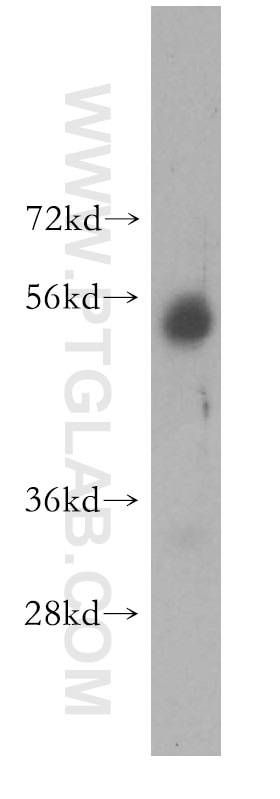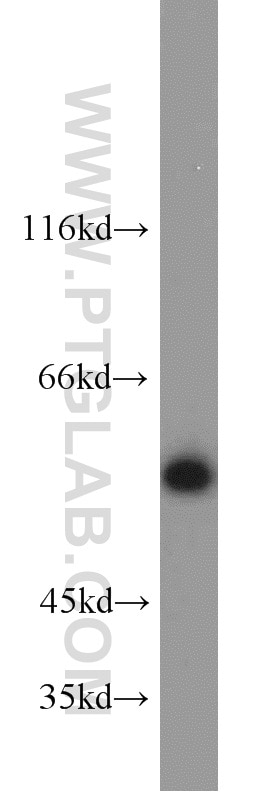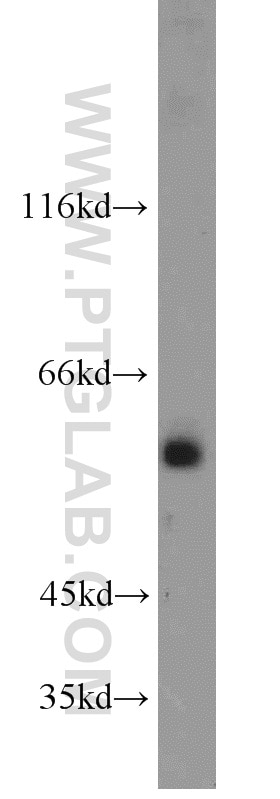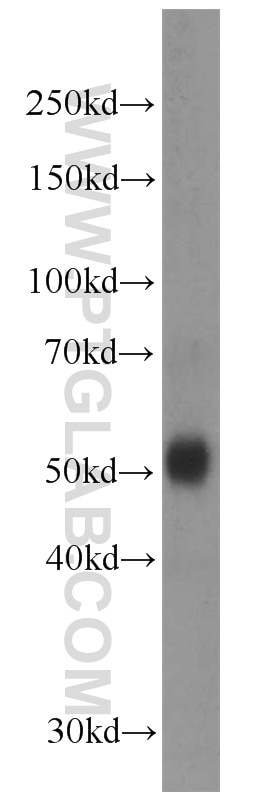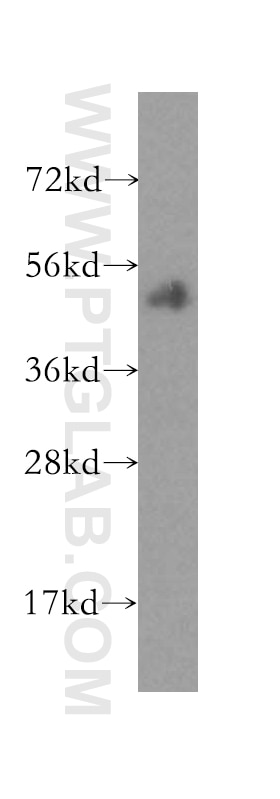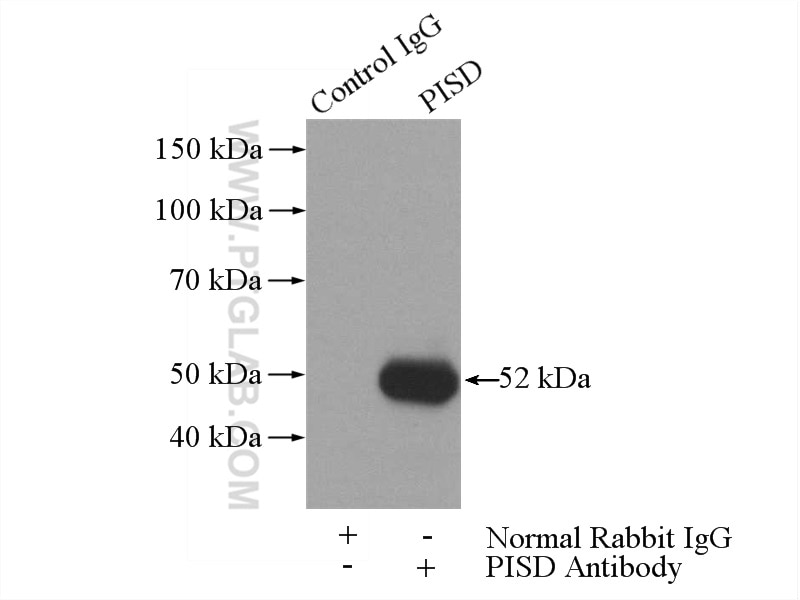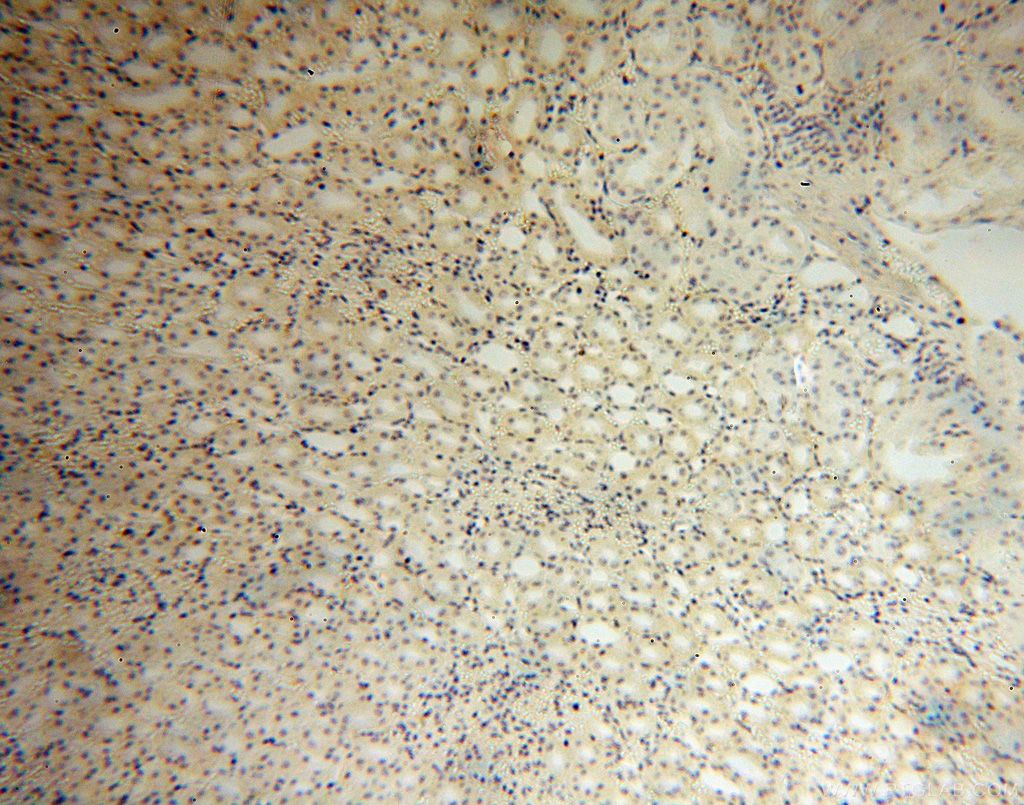- Featured Product
- KD/KO Validated
PISD Polyklonaler Antikörper
PISD Polyklonal Antikörper für WB, IHC, IP, ELISA
Wirt / Isotyp
Kaninchen / IgG
Getestete Reaktivität
human, Maus, Ratte
Anwendung
WB, IHC, IP, ELISA
Konjugation
Unkonjugiert
Kat-Nr. : 16401-1-AP
Synonyme
Geprüfte Anwendungen
| Erfolgreiche Detektion in WB | HeLa-Zellen, COLO 320-Zellen, HepG2-Zellen, humanes Nierengewebe, humanes Milzgewebe, K-562-Zellen, L02-Zellen, NIH/3T3-Zellen |
| Erfolgreiche IP | L02-Zellen |
| Erfolgreiche Detektion in IHC | humanes Nierengewebe Hinweis: Antigendemaskierung mit TE-Puffer pH 9,0 empfohlen. (*) Wahlweise kann die Antigendemaskierung auch mit Citratpuffer pH 6,0 erfolgen. |
Empfohlene Verdünnung
| Anwendung | Verdünnung |
|---|---|
| Western Blot (WB) | WB : 1:1000-1:8000 |
| Immunpräzipitation (IP) | IP : 0.5-4.0 ug for 1.0-3.0 mg of total protein lysate |
| Immunhistochemie (IHC) | IHC : 1:20-1:200 |
| It is recommended that this reagent should be titrated in each testing system to obtain optimal results. | |
| Sample-dependent, check data in validation data gallery | |
Veröffentlichte Anwendungen
| KD/KO | See 1 publications below |
| WB | See 5 publications below |
Produktinformation
16401-1-AP bindet in WB, IHC, IP, ELISA PISD und zeigt Reaktivität mit human, Maus, Ratten
| Getestete Reaktivität | human, Maus, Ratte |
| In Publikationen genannte Reaktivität | human, Maus |
| Wirt / Isotyp | Kaninchen / IgG |
| Klonalität | Polyklonal |
| Typ | Antikörper |
| Immunogen | PISD fusion protein Ag9499 |
| Vollständiger Name | phosphatidylserine decarboxylase |
| Berechnetes Molekulargewicht | 375aa,43 kDa; 408aa,46 kDa |
| Beobachtetes Molekulargewicht | 45~55 kDa |
| GenBank-Zugangsnummer | BC001482 |
| Gene symbol | PISD |
| Gene ID (NCBI) | 23761 |
| Konjugation | Unkonjugiert |
| Form | Liquid |
| Reinigungsmethode | Antigen-Affinitätsreinigung |
| Lagerungspuffer | PBS with 0.02% sodium azide and 50% glycerol |
| Lagerungsbedingungen | Bei -20°C lagern. Nach dem Versand ein Jahr lang stabil Aliquotieren ist bei -20oC Lagerung nicht notwendig. 20ul Größen enthalten 0,1% BSA. |
Hintergrundinformationen
PISD(Phosphatidylserine decarboxylase proenzyme) belongs to the phosphatidylserine decarboxylase family.It contains a conserved LGST motif that functions as an autocatalytic cleavage site where the proenzyme is split into mature alpha and beta subunits.It has 2 isoforms produced by alternative splicing.This antibody is specific to PISD. The sequence correspond to the beta isoform.
Protokolle
| PRODUKTSPEZIFISCHE PROTOKOLLE | |
|---|---|
| WB protocol for PISD antibody 16401-1-AP | Protokoll herunterladen |
| IHC protocol for PISD antibody 16401-1-AP | Protokoll herunterladenl |
| IP protocol for PISD antibody 16401-1-AP | Protokoll herunterladen |
| STANDARD-PROTOKOLLE | |
|---|---|
| Klicken Sie hier, um unsere Standardprotokolle anzuzeigen |
Publikationen
| Species | Application | Title |
|---|---|---|
Cell Death Dis Aberrant ER-mitochondria communication is a common pathomechanism in mitochondrial disease | ||
Cancer Lett LACTB suppresses melanoma progression by attenuating PP1A and YAP interaction. | ||
Front Cell Dev Biol Screening and diagnosis of triple negative breast cancer based on rapid metabolic fingerprinting by conductive polymer spray ionization mass spectrometry and machine learning | ||
J Clin Biochem Nutr Metabolic changes induced by TGF-β1 via reduced expression of phosphatidylserine decarboxylase during myofibroblast transition | ||
bioRxiv Distinct yet Overlapping Functions of VMP1 and TMEM41B in Modulating Hepatic Lipoprotein Secretion and Autophagy in MASH | ||
Cell Stem Cell The Mitochondrial Transacylase, Tafazzin, Regulates for AML Stemness by Modulating Intracellular Levels of Phospholipids.
|
